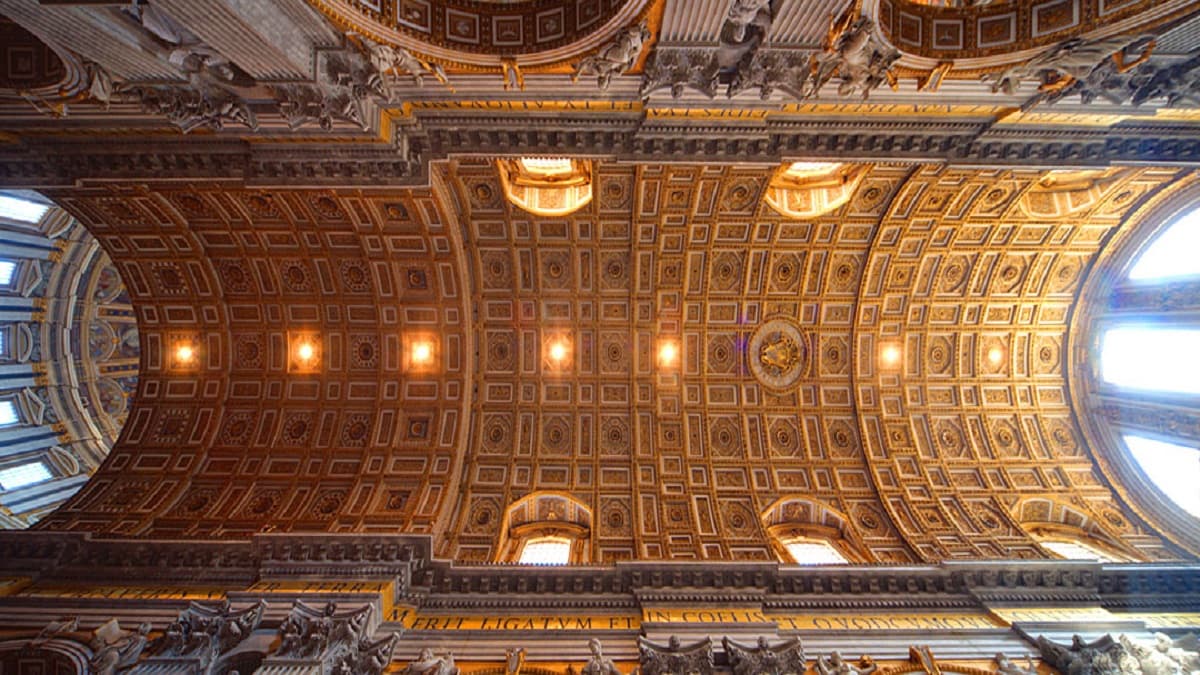A Story Told Through Numbers
The magnificent Vatican basilica as we see it today is the result of a gigantic enterprise that lasted for centuries and is in fact still ongoing. This timeline gave birth to the Italian proverb “è come la fabbrica di S. Pietro"—"it" "'s like the factory of St. Peter's"—to" indicate a work that is perpetually in progress.
The history of the Vatican basilica can also be told through numbers: the 2nd century necropolis where St. Peter was buried after his martyrdom under Nero (67 AD) is 8 meters below the floor of the current church, and it was built over by Constantine to build the ancient basilica, which was demolished during the Renaissance period.

The foundation stone of the current basilica was laid under the papacy of Julius II Della Rovere on April 18th, 1506, (the pope who commissioned Michelangelo the vault of the Sistine Chapel and Raphael the rooms of his apartment), and the “Reverenda Fabbrica di S. Pietro” was specifically established for the construction, maintenance, and extraordinary decoration of the basilica.
The vestiges of the Constantinian basilica lie 5 m below the modern floor and coincide with the so-called Caves or Crypt, a suggestive place to visit, which houses both papal and royal tombs.
The building was completed over the course of 20 pontificates lasting 120 years (consecrated on November 18th, 1626, by Urban VIII Barberini). Among those involved in the works are more than 10 architects and countless masons, stonemasons, carpenters, mosaicists, and even some women, assigned to small jobs (enamels for mosaics, glass, wood, and hard stone carving).
The basilica is accessed through the square (whose diameter exceeds 240 m), and then by climbing the 16 granite and travertine steps, you are overwhelmed by the vision of the immense facade, 118.6 m wide and 45 m high (not including the 13 statues).
The atrium is 71 m long and 12.80 m wide.
Internally, the basilica is 187 m long and 58 m wide and occupies an area of 20,139 m2.
The vault is 45.50m high at its peak, while at the top of the cross (externally), it reaches a height of 133.30m.
The church is decorated with 2 hectares of stucco and over 10,000 m² of mosaics. If you consider the basilica of San Marco in Venice—completely covered with mosaics that cover just over 4,000 m²—you realize the actual size of the giant that is the Vatican, which has a capacity of 60,000 standing people.
Internally, an entablature adorns the building, with biblical inscriptions in Latin and Greek on a 3-meter-high golden frieze.
Few people know that at 25 m above the floor, behind the piers, there are 8 octagonal rooms of 110 m2, accessible by internal spiral staircases.
The baldacchino, or canopy, above the papal altar is 29 m high, as tall as Palazzo Farnese, while at the bottom a double ramp of 16 steps on each side descends to the confession, adorned with 89 bronze oil lamps.
The dome, weighing 14,000 tons, has an internal diameter of 42.96 m. Until the 1950s, the golden bronze sphere at the top could be entered, in which there is a circular bench where 10 people can sit. The basilica has an average of 30,000 visitors/faithful every day.
Is it Really the Largest Church in the World?
The central space of the floor is decorated with bronze letters and numbers to indicate the lengths of the twenty-eight largest churches in the world, both Catholic and non-Catholic—such as Notre Dame in Paris, Saint Patrick's in New York, Hagia Sophia in Istanbul, and Westminster—all of which could fit inside the Vatican.
However, St. Peter’s is not the largest church in the world: Our Lady of Peace in the Ivory Coast, a huge modern copy of the Vatican basilica, is wider (150 m) but has a smaller capacity.

Vox City, The Vox Group's Dedicated Business-To-Consumer Arm For The Past Five Years, Is Staffed By Veteran Travel Industry Experts With A Combined 21 Years Of Expertise In The Tourism Industry. Let's Explore The Beauty Of Travel In Your Own Way At Your Own Pace.
Vox City International 63 Holly Walk | CV32 4JG Leamington Spa
2025 Vox City, All rights reserved.





